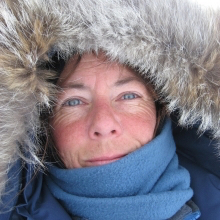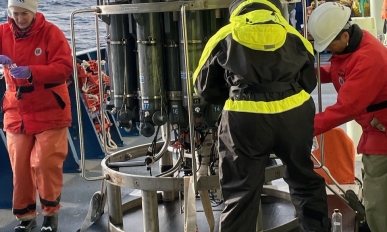The US academic research vessel RV Neil Armstrong departed from Nuuk, Greenland in early October. On the first leg of our journey, the science team’s initial purpose was to collect water samples and previously deployed instruments along a line of moorings at the southern entrance to Baffin Bay, a gateway between the Arctic and the north Atlantic. This line stretches from Sisimiut, on the west side of Greenland, to just off Cape Dyer, near the Canadian coast.
The Arctic Observing Network - Capturing and Understanding Arctic Change with Renewed Observations at the Davis Strait Gateway
Davis Strait lies between Greenland and Canada and is one of three primary gateways between the Arctic and the global oceans. Because of this, physical and biological observations from coast to coast allow us to better understand interactions between Arctic change and the global climate. We are studying the marine ecosystem from physical and chemical water properties up through plankton, fish, and marine mammals and seabirds in order to describe long-term changes in the environment over local to pan-Arctic scales
Participants Involved in This Project
From the Blog
© Polar STEAM. All Rights Reserved.





